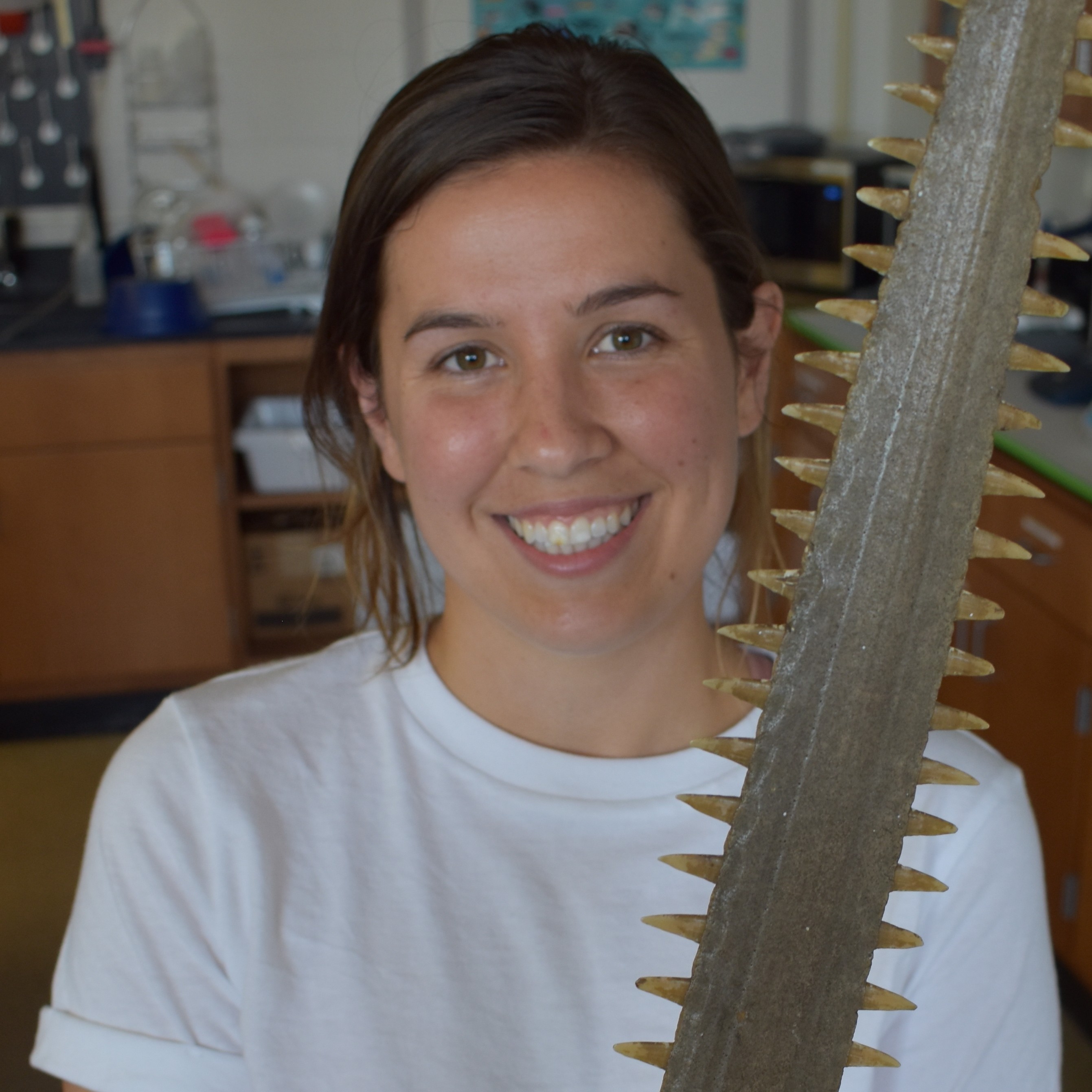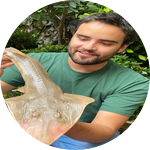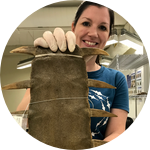About This Project
Guitarfishes belong to the ‘rhino rays,’ one of the most imperiled groups of fishes worldwide. In Mexico, guitarfishes of the genus Pseudobatos are routinely sold as “pez diablo,” where they are cut, shaped, and dried to produce a devil-like appearance. They are then offered as an alternative medicine for various diseases or as a curio item. This project aims to use DNA to assess which species are commonly traded in the country as “pez diablo.”
Ask the Scientists
Join The DiscussionWhat is the context of this research?
Mexico has a long-standing tradition of using wildlife for a variety of remedies (Alonso-Castro, 2014). Imperiled guitarfishes of the genus Pseudobatos are routinely sold as “pez diablo,” where they are cut, shaped, and dried to produce a devil-like appearance and then offered as an alternative or complementary medicine for various diseases or as a curio item. In the process of making a “pez diablo,” many morphological characteristics are removed, making species-specific identification complicated or even impossible. Complicating the matter, eight of the nine existing Pseudobatos species occur in the country (Rutledge 2019; Last et al. 2016). Given the imperiled status of guitarfishes, a detailed account of the species traded as “pez diablo” is urgently needed.
What is the significance of this project?
Correct species identification is the first step in any management efforts. In February 2023, guitarfishes (including Pseudobatos spp.) were added to CITES (Convention on the International Trade in Endangered Species of Wild Fauna and Flora). However, there is little access to genetic information on Pseudobatos spp. to assist in identifying wildlife products made of this genus. In addition to the samples from Mexico, we obtained samples from Peru, Ecuador, and the USA which will strengthen the genetic reference library to identify guitarfish specimens traded as "pez diablo" in traditional medicinal markets in Mexico. Furthermore, the library created in this project will aid wildlife inspectors worldwide in identifying any Pseudobatos products.
What are the goals of the project?
This project aims to first: generate a reliable genetic reference library of guitarfishes of the genus Pseudobatos by including two mitochondrial loci. Second: identify which guitarfish species are commonly traded as "pez diablo" in medicinal markets in Mexico by amplifying two loci. Sequence data generated from our "pez diablo" samples will be screened and compared with our costume-built genetic reference library using two loci to determine each specimen identification. Third: sequence data of both loci from our custom-built genetic reference library will be deposited in GenBank and readily available for other researchers and wildlife inspectors in need to screen any guitarfishes products to enforce CITES regulations.
Budget
There is a knowledge gap at the molecular level of guitarfishes of the genus Pseudobatos (nine species). The funds will be used to sequence a second mitochondrial locus to determine species-specific identification of guitarfishes sold as "pez diablo" in traditional medicinal markets in Mexico. In addition, the budget will be used to expand a custom-built genetic reference library for guitarfishes. Sequence data of samples already collected from the USA, Mexico, Peru, and Ecuador will be deposited and available in GenBank for other researchers to use. We received funds from Save Our Seas Foundation to collect samples in Mexican medicinal markets, sequence one mitochondrial locus, and create an identification guide of guitarfishes of the genus Pseudobatos. However, a second locus is needed because some species are genetically conserved.
Endorsed by
 Project Timeline
Project Timeline
This project will be completed within 6 months. Tissue samples of guitarfishes are already collected. The first two months will be used to extract DNA and design primers to amplify two mitochondrial loci. In the third month, we will amplify and sequence the DNA of all our guitarfish samples collected, and the last three months will be allocated to analyzing data. Sequence data of two locus will be publicly available through GenBank after analysis.
May 23, 2023
Project Launched
Aug 31, 2023
Complete DNA extractions and primers design
Oct 31, 2023
Complete PCR amplification of DNA
Dec 22, 2023
Complete data analysis
Meet the Team
Affiliates
Affiliates
Bryan L. Huerta Beltrán
Hi! I was born and raised in Mexico City. I am pursuing my Master’s degree at the University of Southern Mississippi in Hattiesburg, Mississippi, under the advisement of Dr. Nicole Phillips. I completed my B.S. degree in Conservation and Wildlife Management at Delaware Valley University in Doylestown, PA. After completing my B.S., I joined the Mississippi State University Marine Fisheries Ecology Program, where I assisted with bottom longline surveys in the northern Gulf of Mexico and expanded my field-work experience by helping to work up specimens, collecting data, and tagging and releasing sharks and rays. My long-time passion particularly lies in elasmobranchs (sharks and rays), especially those species that receive less attention, such as the guitarfishes of the genus Pseudobatos. My research project consists in investigating the poorly known guitarfishes of the genus Pseudobatos. Here you can learn more about my project!
Nicole Phillips
I am an Associate Professor at the University of Southern Mississippi and the Vice President of the Sawfish Conservation Society. My research is focused on using molecular tools to support conservation of threatened species. I am particularly interested in imperiled rays, and have been studying sawfish conservation genetics for nearly 20 years.
Lab Notes
Nothing posted yet.
Project Backers
- 3Backers
- 2%Funded
- $60Total Donations
- $20.00Average Donation


